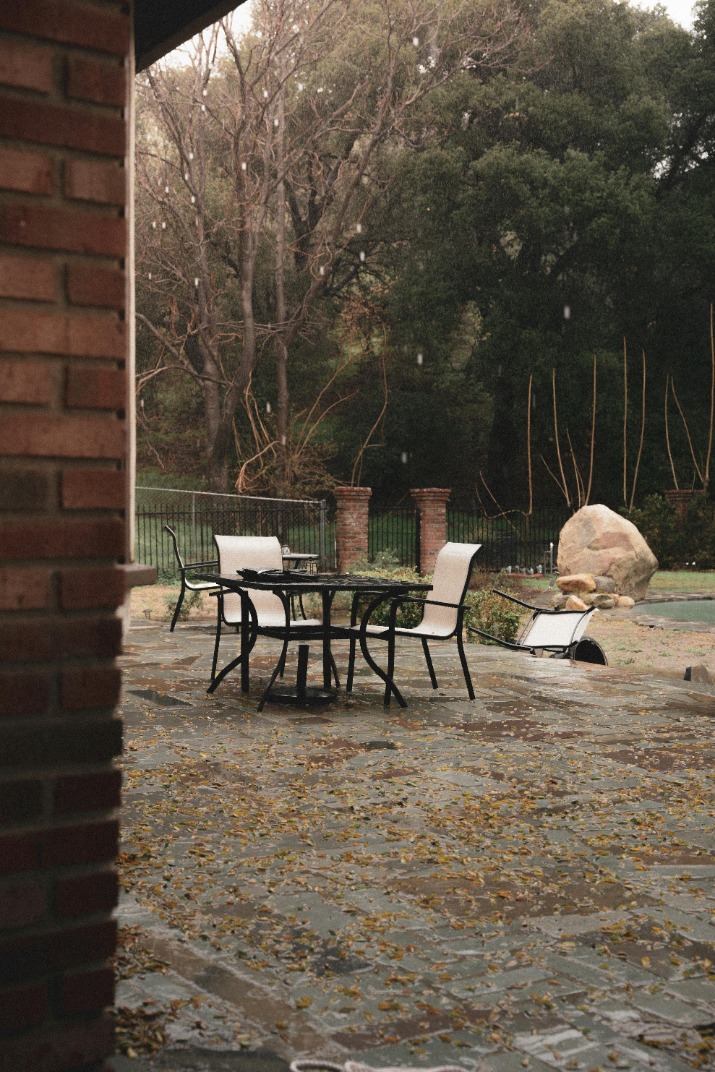Benefits of Leaving Patio Furniture Outside in Winter
It is generally not recommended to leave patio furniture outside during the winter months as the cold temperatures, frost, and snow can cause damage to the materials. Metal furniture may rust, while wood furniture can warp or crack. Plastic furniture may become brittle and break under the weight of snow or ice. Additionally, cushions and fabric on outdoor furniture may become moldy from exposure to moisture. To prolong the durability of your patio furniture, it is best to store it indoors or in a covered area during the winter season.
Leaving your patio furniture outside in the winter can depend on the type of material it is made from. If your furniture is made from materials like aluminum, plastic, or treated wood, it may be okay to leave it outside. However, it is still recommended to cover or store your furniture to protect it from harsh winter conditions. Exposure to snow, ice, and extreme temperatures can cause damage over time.
If your furniture is made from materials like wicker, rattan, or untreated wood, it is best to bring it inside or store it in a covered area during the winter months. These materials are more susceptible to damage from moisture and cold temperatures. By taking the time to properly care for your patio furniture, you can extend its lifespan and keep it looking great for years to come.
Risks of Leaving Patio Furniture Outside in Winter
Leaving your patio furniture outside during the winter months can result in damage from snow and ice. The cold temperatures can cause materials such as wood and metal to contract, potentially leading to cracks and corrosion. Snow and ice buildup can also create excess weight on the furniture, causing it to buckle or break. Additionally, moisture from melted snow can seep into cushions and upholstery, leading to mold and mildew growth. To protect your patio furniture from damage, it is recommended to cover or store it indoors during the winter season.
Patio furniture left outside during winter is at risk for rust or corrosion due to exposure to moisture, snow, and ice. These elements can seep into the metal components of the furniture, leading to oxidation and deterioration over time. Regular maintenance and protection measures such as applying a coat of protective sealant or paint can help prevent rust or corrosion from forming.
Additionally, storing patio furniture indoors or in a covered area during the winter months can greatly reduce the chances of rust or corrosion occurring. Proper cleaning and drying before storage can also protect the furniture from damage. Regular inspection and maintenance throughout the winter can help identify and address any potential issues before they escalate.
Tips for Protecting Patio Furniture in Winter
Investing in weatherproof covers for your patio furniture is a wise decision if you plan to leave it outside during the winter months. These covers are designed to protect your furniture from the elements, including snow, rain, and wind. They provide an extra layer of protection against moisture, preventing rust and mold from forming on metal surfaces.
Additionally, weatherproof covers can help prolong the lifespan of your patio furniture by shielding it from UV rays that can cause fading and deterioration. By properly covering your furniture, you can enjoy it for years to come without worrying about extensive damage from harsh weather conditions. Overall, investing in weatherproof covers is a cost-effective way to maintain the quality and appearance of your outdoor furniture.
1. It is generally recommended to store cushions and fabrics indoors during the winter months to protect them from harsh weather conditions.
2. Leaving patio furniture outside in the winter can lead to damage such as mold, mildew, discoloration, and deterioration of the materials.
3. Storing cushions indoors not only preserves their appearance and prolongs their lifespan but also prevents the need for replacement due to weather-related damage.
4. If storing cushions indoors is not an option, consider investing in weatherproof covers or storage containers to protect them from the elements.
5. Lastly, it is important to properly clean and dry cushions before storing them to prevent mold and mildew growth while in storage.
It is generally not recommended to leave patio furniture outside during the winter, especially if it is not specifically designed to withstand harsh weather conditions. Low temperatures, snow, ice, and moisture can cause damage to the furniture, leading to rust, mold, or warping. Applying protective coatings can help to some extent, but it may not provide enough protection against extreme winter weather. It is advisable to store your patio furniture indoors or in a sheltered area during the winter months to ensure its longevity and prevent any potential damage.

